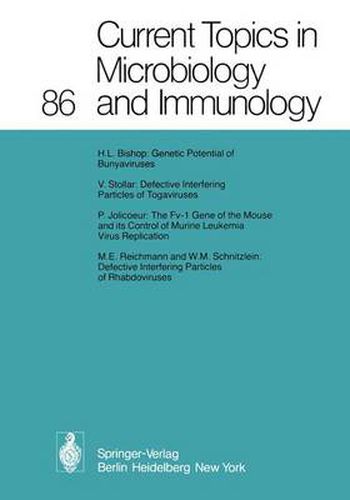Readings Newsletter
Become a Readings Member to make your shopping experience even easier.
Sign in or sign up for free!
You’re not far away from qualifying for FREE standard shipping within Australia
You’ve qualified for FREE standard shipping within Australia
The cart is loading…






This title is printed to order. This book may have been self-published. If so, we cannot guarantee the quality of the content. In the main most books will have gone through the editing process however some may not. We therefore suggest that you be aware of this before ordering this book. If in doubt check either the author or publisher’s details as we are unable to accept any returns unless they are faulty. Please contact us if you have any questions.
1.1 Classification of Togaviruses The family, Togaviridae, is composed of the alphaviruses, the flaviviruses, rubella (a rubivirus), and the pestiviruses (Fenner, 1976). Of these four genera, two (the alpha- and flaviviruses) are transmitted by blood-sucking arthropods, specif ically mosquitoes and ticks. Among the togaviruses, extensive studies of defective interfering (DI) particles have so far been carried out only with Sindbis virus (SV) and Semliki Forest virus (SFV), both members of the alphavirus genus. Since these viruses are so similar, in most cases it will be assumed that what is true of one is also true of the other. 1.2 Definition of Defective Interfering (DI) Particles Defective interfering viral particles, as defined by Huang (1973), have the follow ing properties: (1) they are deletion mutants and therefore lack large amounts of the genetic material present in the standard virus; (2) they contain the same viral structural proteins as standard virus; (3) they are unable to replicate alone; however, they are replicated in cells co-infected with standard virions; and (4) at the same time as they require standard virus to replicate, they inhibit the replication of standard virus and hence are interfering.
$9.00 standard shipping within Australia
FREE standard shipping within Australia for orders over $100.00
Express & International shipping calculated at checkout
This title is printed to order. This book may have been self-published. If so, we cannot guarantee the quality of the content. In the main most books will have gone through the editing process however some may not. We therefore suggest that you be aware of this before ordering this book. If in doubt check either the author or publisher’s details as we are unable to accept any returns unless they are faulty. Please contact us if you have any questions.
1.1 Classification of Togaviruses The family, Togaviridae, is composed of the alphaviruses, the flaviviruses, rubella (a rubivirus), and the pestiviruses (Fenner, 1976). Of these four genera, two (the alpha- and flaviviruses) are transmitted by blood-sucking arthropods, specif ically mosquitoes and ticks. Among the togaviruses, extensive studies of defective interfering (DI) particles have so far been carried out only with Sindbis virus (SV) and Semliki Forest virus (SFV), both members of the alphavirus genus. Since these viruses are so similar, in most cases it will be assumed that what is true of one is also true of the other. 1.2 Definition of Defective Interfering (DI) Particles Defective interfering viral particles, as defined by Huang (1973), have the follow ing properties: (1) they are deletion mutants and therefore lack large amounts of the genetic material present in the standard virus; (2) they contain the same viral structural proteins as standard virus; (3) they are unable to replicate alone; however, they are replicated in cells co-infected with standard virions; and (4) at the same time as they require standard virus to replicate, they inhibit the replication of standard virus and hence are interfering.